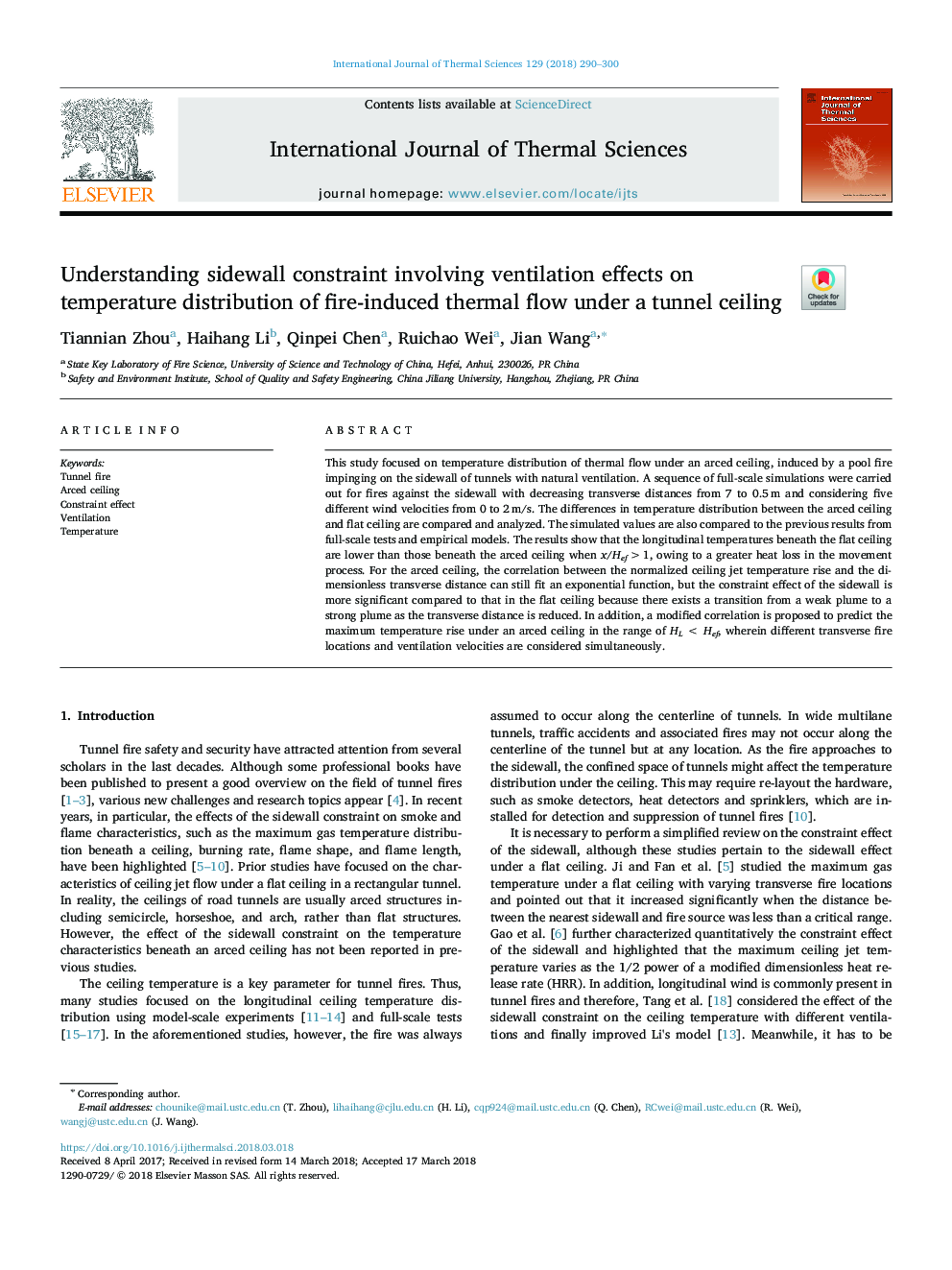| Article ID | Journal | Published Year | Pages | File Type |
|---|---|---|---|---|
| 7060711 | International Journal of Thermal Sciences | 2018 | 11 Pages |
Abstract
This study focused on temperature distribution of thermal flow under an arced ceiling, induced by a pool fire impinging on the sidewall of tunnels with natural ventilation. A sequence of full-scale simulations were carried out for fires against the sidewall with decreasing transverse distances from 7 to 0.5â¯m and considering five different wind velocities from 0 to 2â¯m/s. The differences in temperature distribution between the arced ceiling and flat ceiling are compared and analyzed. The simulated values are also compared to the previous results from full-scale tests and empirical models. The results show that the longitudinal temperatures beneath the flat ceiling are lower than those beneath the arced ceiling when x/Hef > 1, owing to a greater heat loss in the movement process. For the arced ceiling, the correlation between the normalized ceiling jet temperature rise and the dimensionless transverse distance can still fit an exponential function, but the constraint effect of the sidewall is more significant compared to that in the flat ceiling because there exists a transition from a weak plume to a strong plume as the transverse distance is reduced. In addition, a modified correlation is proposed to predict the maximum temperature rise under an arced ceiling in the range of HLâ¯<â¯Hef, wherein different transverse fire locations and ventilation velocities are considered simultaneously.
Related Topics
Physical Sciences and Engineering
Chemical Engineering
Fluid Flow and Transfer Processes
Authors
Tiannian Zhou, Haihang Li, Qinpei Chen, Ruichao Wei, Jian Wang,
